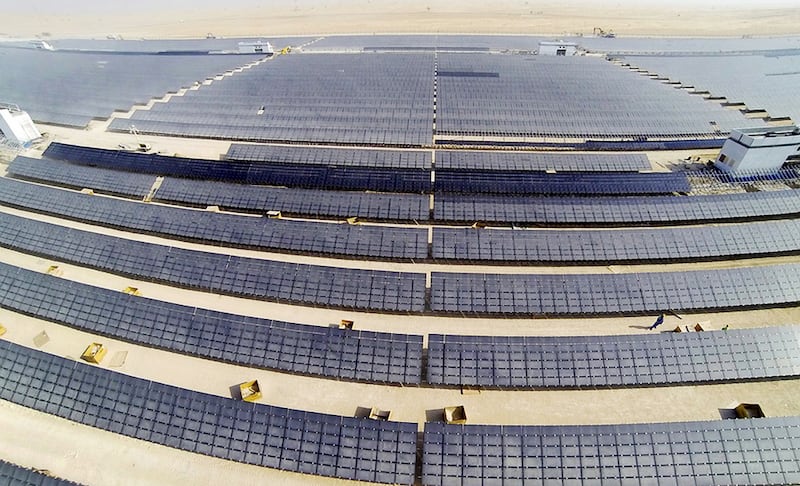By developing the right structures and mechanisms for green finance, governments in the oil-rich Gulf region can unlock $2 trillion in cumulative economic output and create more than one million jobs by 2030.
Investors around the globe are keen to invest in green schemes and having the right frameworks in place could also help to boost foreign direct investment in sustainable industries, Strategy& Middle East, which is part of the PwC network, said in a report on Monday.
Enacting policies that promote environmental sustainability in all industries and creating green sovereign wealth funds are priority considerations for Gulf governments, the report said.
Sovereigns should also strengthen their capital markets and develop standardised and transparent reporting mechanisms for environmental performance.
Six major non-oil sectors in the GCC ― power, water, construction, mobility, food and waste management ― are forecast to potentially make a cumulative gross domestic product contribution of about $2tn through 2030, which is a significant opportunity for the GCC governments.
“Investors around the world are pouring capital into projects with a strong environmental, social and governance [ESG] angle,” said Aurelien Vincent, partner at Strategy& Middle East.
“Our analysis has found that green investments in six key GCC industries could have a profound socioeconomic impact that has the potential to create over one million skilled jobs and turbocharge foreign direct investment in highly sustainable industries.”
Governments in the six-member economic bloc of GCC are increasingly boosting investment in green projects and sustainability-linked schemes that follow ESG standards. Building greener economies, climate action and the sustainable investing are among central planks of economic overhaul agenda of the governments in the region.
Green financing involves structured financial instruments that are created specifically to fund environment, ecology or sustainability-related projects. It includes an array of loans and bonds to encourage the development of projects in sectors such as renewable energy, energy efficiency, pollution prevention, biodiversity conservation and circular economy initiatives. Globally, the green bond market is estimated to reach $2.36tn by 2023, according to the World Economic Forum.
It is increasingly becoming popular in the Mena region, especially in the GCC, where several ecologically focused and renewable energy projects are being developed. Saudi Arabia and the UAE, the two largest Arab economies are already home to some of the largest solar plants in the world and are investing heavily in clean fuels such as hydrogen.
Strategy& said there are clear opportunities in green hydrogen where production technologies are easily accessible, reducing barriers to entry.
"Based on our global supply and demand analysis, exporting countries can potentially capture a market of approximately 200 million tonnes of green hydrogen by 2050, worth $300bn per annum. The green hydrogen export market can also create 400,000 operations and maintenance jobs," the report said.
GCC countries also have some of the highest solar exposures in the world, said Anthony Yammine, principal at Strategy& Middle East.
“A solar-photovoltaic panel in a GCC country produces twice as much output as it would in Germany or any climatically similar European country ― 1,750 to 1,930 hours of full-load operation per year,” he said.






